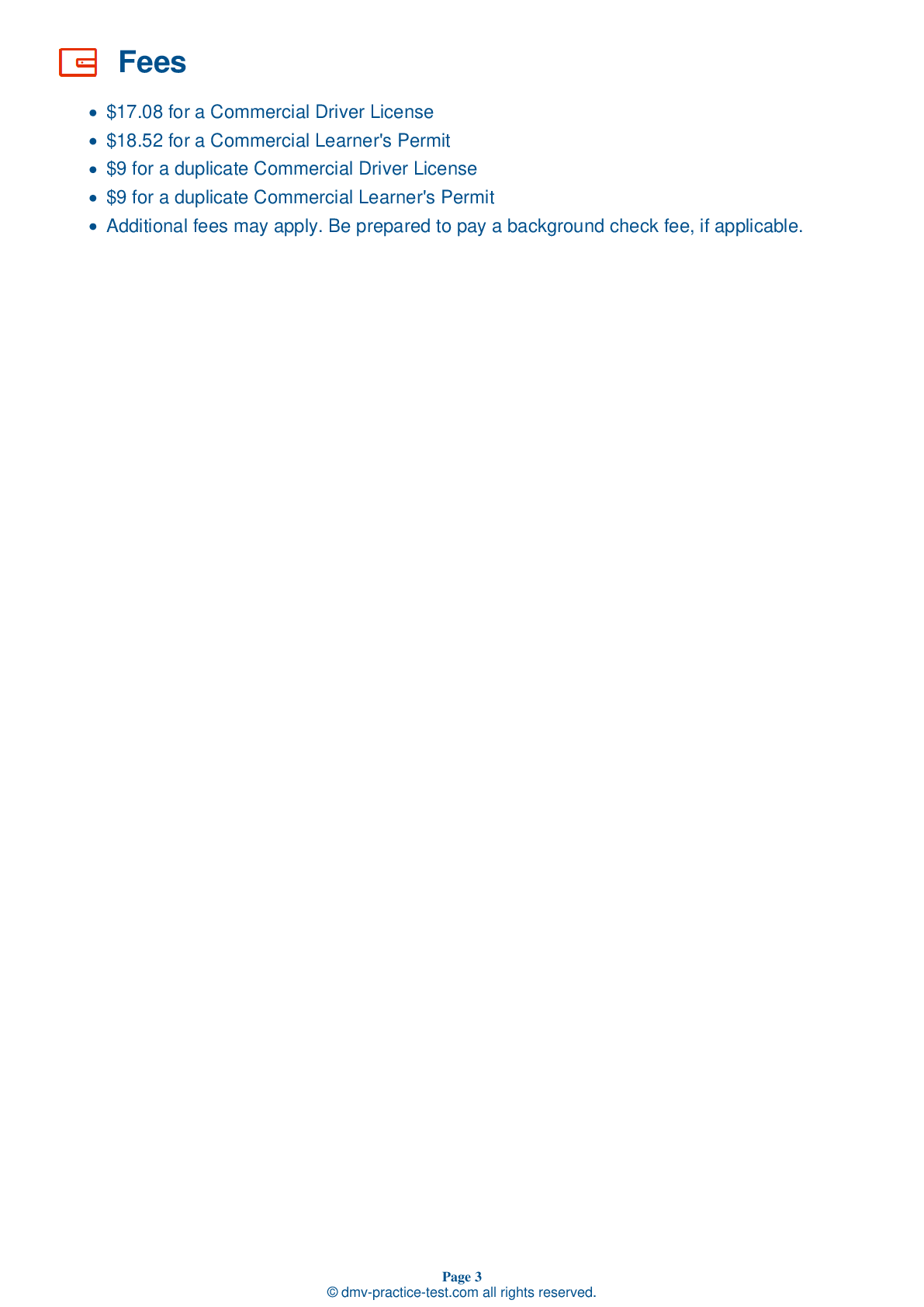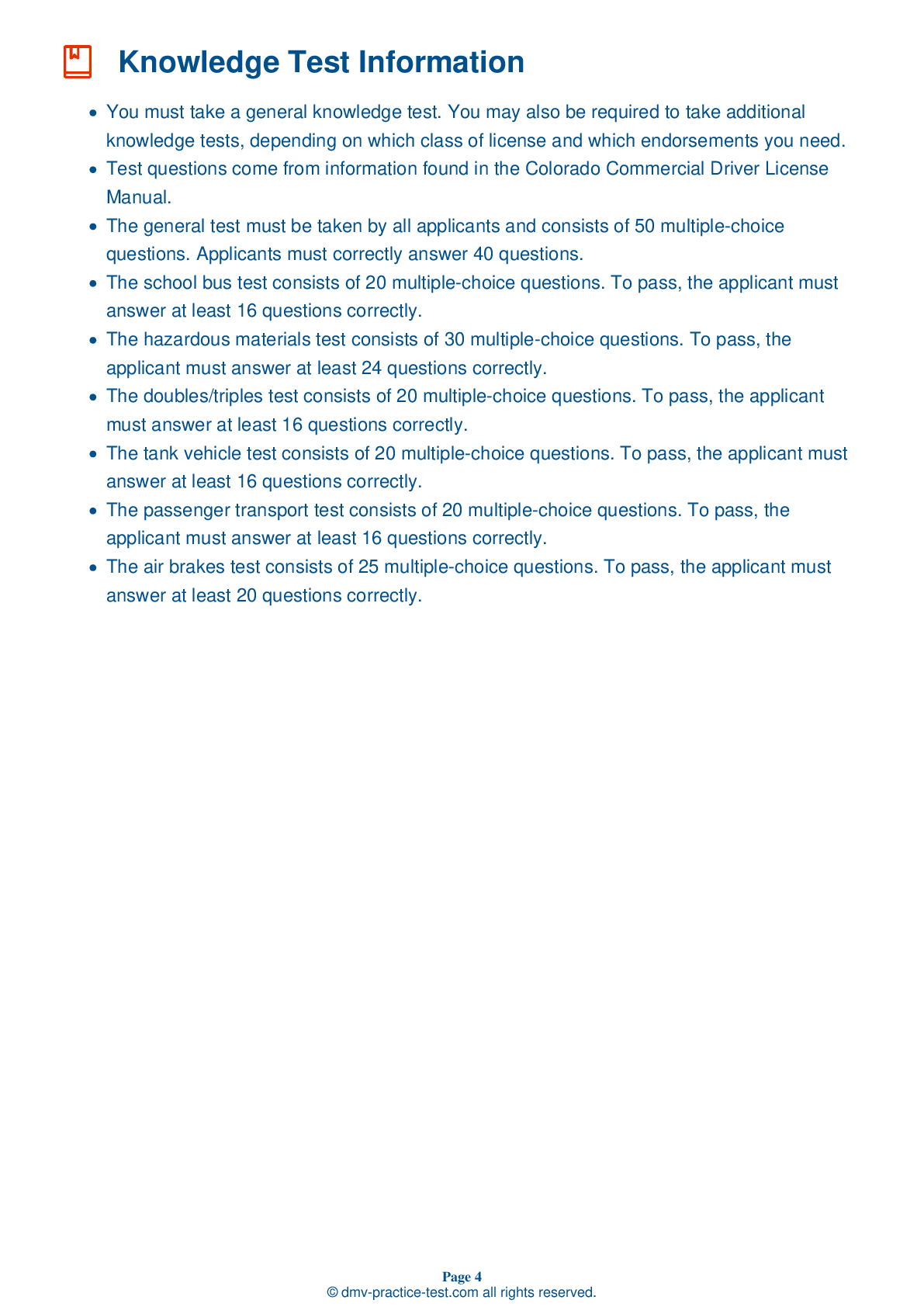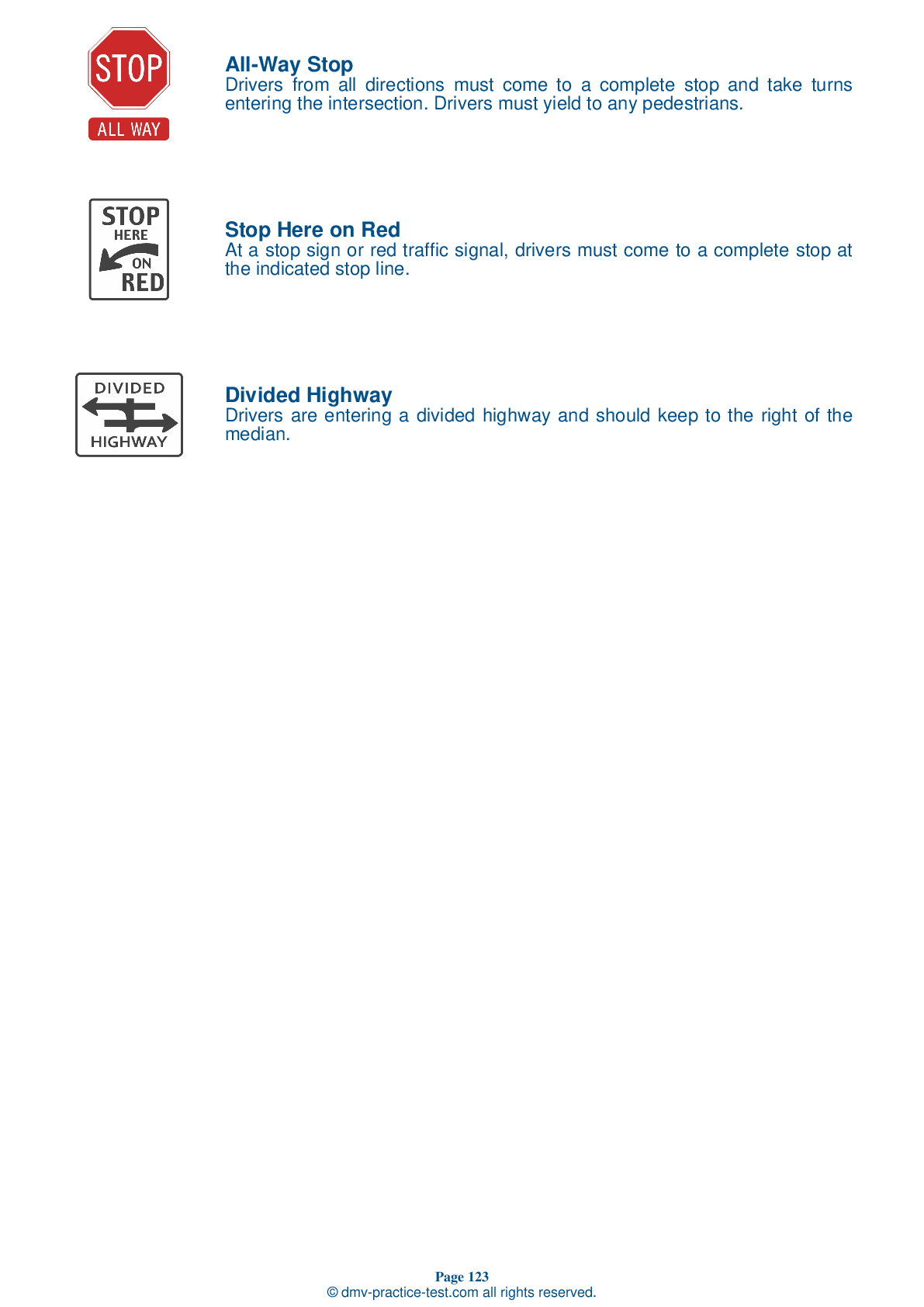Class B Driving Test | Colorado 2025 #1 Page 7 of 7
Train for FREE online with our Colorado class B license test. The official exam test consists of several obligatory parts, with all of them checking your knowledge of different blocks of road rules. If you need to obtain a CO CDL class B permit in 2025, practice as much as possible. Free sample tests published on our website will help you check and improve your knowledge and boost your grades. Please bear in mind that CDL class B requirements may vary from state to state.
43 . A low air pressure warning signal should activate:
In an air brake system, a low air pressure warning signal must come on if air pressure in the tanks falls below 60 psi. This warning signal may come in the form of a light, a buzzer, or a wig wag.
44 . Header boards:
Front-end header boards, also known as "headache racks," protect the driver from cargo moving in the event of a crash or emergency stop.
45 . When driving, it is important to:
For safe driving, it is essential that you are aware of what is happening on all sides of your vehicle. In addition to watching the road ahead, you should frequently check your mirrors to monitor the road to the sides and to the rear of your vehicle.
46 . Roads are most slippery right after it begins to rain because:
Roads are particularly slippery when it first begins to rain. The water mixes with oil drippings on the road that have not yet washed away, creating a slippery and dangerous mixture.
47 . If a load is 40 feet long, it must be secured by a minimum of ____ tie-downs.
On flatbed trailers and trailers without sides, cargo needs to be tied down. There should be at least one tie-down for every 10 feet of cargo. Regardless of the size of the cargo, at least two tie-downs must be used.
48 . An example of mandatory emergency equipment is:
Mandatory emergency equipment includes: at least one fire extinguisher; spare electrical fuses (unless the vehicle is equipped with circuit breakers); and warning devices for parked vehicles (such as reflective triangles).
49 . When you leave your vehicle, you should:
Always apply the parking brake when leaving your vehicle.
50 . What can happen if a parking brake is used in very wet weather when temperatures are below freezing?
If you use the parking brakes when the weather is very wet and the temperature is below freezing, the brakes may become frozen, preventing the vehicle from moving.
See the exact questions that will be on the 2025 Colorado DMV exam.
99.2% of people who use the cheat sheet pass the FIRST TIME
Lillian MCcranie explains how our CDL study guide was helpful in passing the exam and recommends it to everyone.
Cameron tells us how he purchased the CDL exam, and found it to be a useful tool which helped him pass the exam and find a job.



